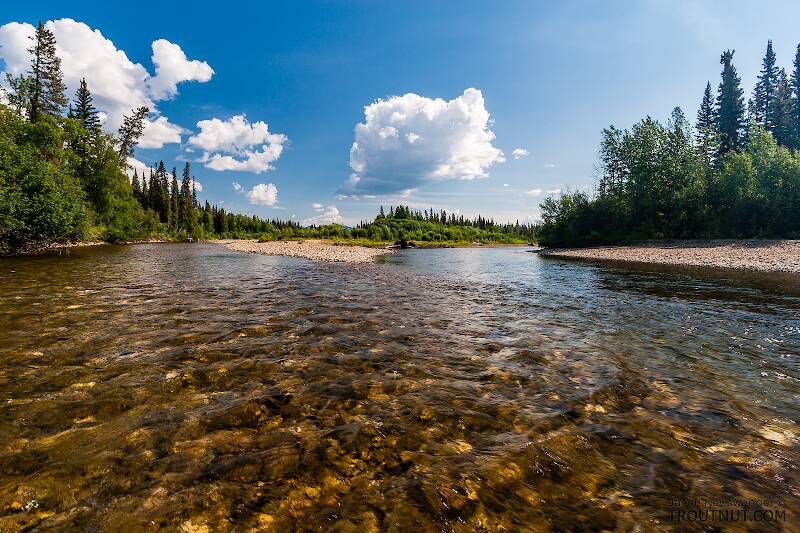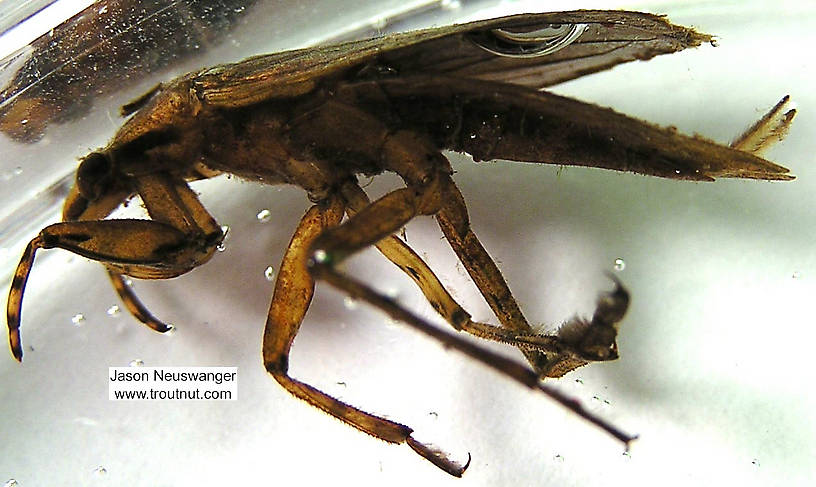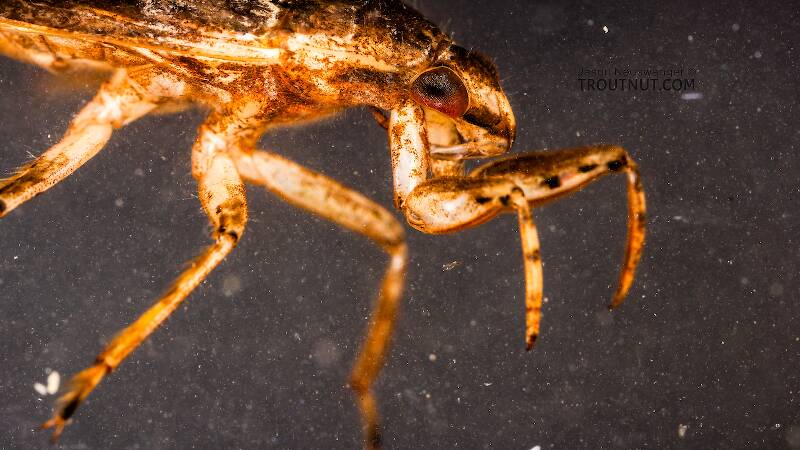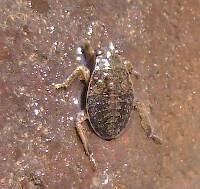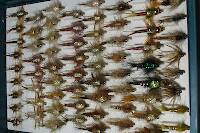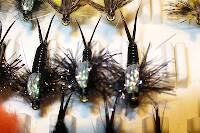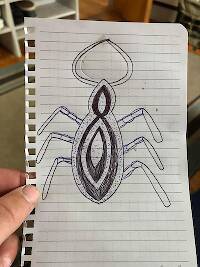
Blue-winged Olives
Baetis
Tiny Baetis mayflies are perhaps the most commonly encountered and imitated by anglers on all American trout streams due to their great abundance, widespread distribution, and trout-friendly emergence habits.
Featured on the forum

Troutnut is a project started in 2003 by salmonid ecologist Jason "Troutnut" Neuswanger to help anglers and
fly tyers unabashedly embrace the entomological side of the sport. Learn more about Troutnut or
support the project for an enhanced experience here.
This topic is about the Giant Water Bug Species Belostoma flumineum
Example specimens
Troutnut on Jul 26, 2006July 26th, 2006, 3:04 am EDT
Back when I was just starting to learn to fly fish and still kept quite a few fish, I autopsied the stomachs of a couple 17-19 inch brown trout in August and found them packed with these Belostoma flumineum bugs.
I haven't tied a reasonable imitation yet, but if those fish (from a few miles apart on the same river) were so fond of them an imitation is probably a great idea. It would be good to figure out where and when these things are important.
None of the fly fishing literatue I've seen has dealt with them at all, except for mentioning their existence in passing.
I haven't tied a reasonable imitation yet, but if those fish (from a few miles apart on the same river) were so fond of them an imitation is probably a great idea. It would be good to figure out where and when these things are important.
None of the fly fishing literatue I've seen has dealt with them at all, except for mentioning their existence in passing.
Jason Neuswanger, Ph.D.
Troutnut and salmonid ecologist
Troutnut and salmonid ecologist
Troutnut on Oct 8, 2006October 8th, 2006, 6:20 pm EDT
I kept a couple of the 30+ trout I caught tonight in a small Finger Lakes tributary for dinner tomorrow. One had an empty stomach, and the other had one little terrestrial beetle and three big Belostoma bugs.
This reinforces my notion that these insects are more important than anyone has previously stated. A couple months and half a continent away from my first experience, I'm still finding them in a trout's diet.
Gonzo, have you ever tried tying up an imitation? It's hard to match both their profile and posture. I'm thinking that the Tyvek you use (which I'm looking forward to trying ASAP) holds some possibilities for this one.
This reinforces my notion that these insects are more important than anyone has previously stated. A couple months and half a continent away from my first experience, I'm still finding them in a trout's diet.
Gonzo, have you ever tried tying up an imitation? It's hard to match both their profile and posture. I'm thinking that the Tyvek you use (which I'm looking forward to trying ASAP) holds some possibilities for this one.
Jason Neuswanger, Ph.D.
Troutnut and salmonid ecologist
Troutnut and salmonid ecologist
GONZO on Oct 9, 2006October 9th, 2006, 9:42 am EDT
I have tried to imitate them. (I think. Is there much of a difference between Lethocerus and Belostoma? I'm assuming they're pretty much the same.) And I'm glad fish eat them--they bite, they eat fish, and they're too roach-like for me to have much affection for them.
Oddly, all of the references I've seen to fish eating them have been in non-angling books. Perhaps the reason is that they are hard to imitate effectively. It's mostly a size and shape issue. I've tried two versions--one dry and one wet. The dry was more effective (tied mostly with foam and rubber legs). The diving/swimming version kept wanting to spin or wobble like a spoon, and I gave up on it without solving the balance problems.
The dry was better, but still no masterpiece. I had to use a much larger hook than I like in order to get it to land right-side-up consistently, and unless I used a pretty stout leader, it would twist.
In the end, I decided that I didn't want to discourage trout from eating these nasty things by providing any negative conditioning with my flies! :) Just a convenient rationalization of a fly-tying failure.
Oddly, all of the references I've seen to fish eating them have been in non-angling books. Perhaps the reason is that they are hard to imitate effectively. It's mostly a size and shape issue. I've tried two versions--one dry and one wet. The dry was more effective (tied mostly with foam and rubber legs). The diving/swimming version kept wanting to spin or wobble like a spoon, and I gave up on it without solving the balance problems.
The dry was better, but still no masterpiece. I had to use a much larger hook than I like in order to get it to land right-side-up consistently, and unless I used a pretty stout leader, it would twist.
In the end, I decided that I didn't want to discourage trout from eating these nasty things by providing any negative conditioning with my flies! :) Just a convenient rationalization of a fly-tying failure.
Quick Reply
Related Discussions
Topic
Replies
Last Reply
2
Sep 10, 2010
by Taxon
by Taxon
3
Jul 4, 2018
by Jmd123
by Jmd123
6
Mar 27, 2011
by Doublea176
by Doublea176
1
Nov 3, 2015
by TimCat
by TimCat

